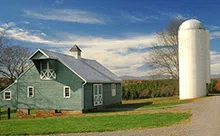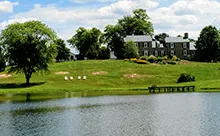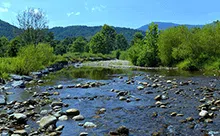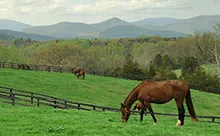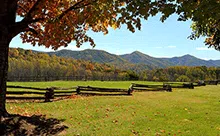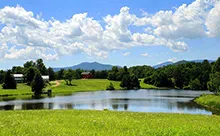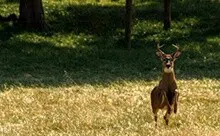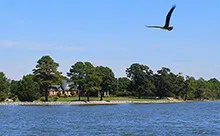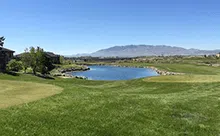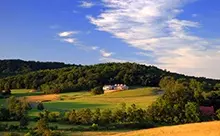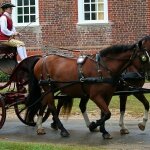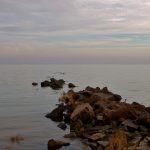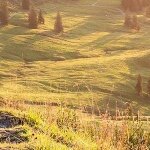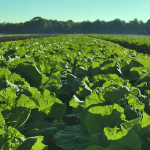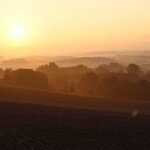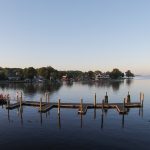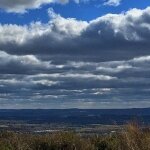Fishing and Fossil Hunting
Fishing and Fossil Hunting

Fishing and Fossil Hunting Virginia
Teddy Roosevelt was a fisherman, hunter, naturalist, outdoorsman, and proprietor of exploration to a dangerous degree, by any standard. Take, for example, Candace Miller’s The River of Doubt. I wouldn’t have been able to keep up with Roosevelt on many of his exploits. Of that, I have no doubt. I also immensely enjoy outdoor recreation, and thus, I found myself the planner and leader of an expedition into the western mountains of Virginia. The chances of us being swept away in the Jackson River, or the Maury River as it rapidly twists and turns through Goshen Pass, were rather low. It was true there may be wildlife, but the most likely injury we would incur would probably be a scrape on our elbows or knees while scraping the ground to uncover a fossil. A Boy Scout is always prepared, and I had made the necessary preparations to ensure we’d have the best time possible on our two day excursion.
I poured over the paper maps for hours, looked through online articles and books for cross-reference, and narrowed the trip to Alleghany, Augusta, Bath, Highland, and Rockbridge counties. I wanted access to the limestone, sandstone, and shale from the Mississippian-Devonian and Silurian-Ordovician periods of the Paleozoic era to hunt for brachiopods, tubes, and trilobites. I didn’t happen to just know this, but through my research learned exactly what I was looking for and where to try and find it.
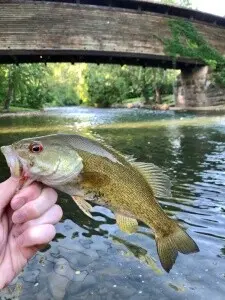 What I did know, however, were the good stretches of water for Rainbow Trout and Smallmouth Bass fishing. A cold front had moved through two days prior and the river levels were already slightly higher than normal, but not so high as to prevent wade fishing. The forecast was sunny and highs in the seventies and lows in the fifties. Perfect weather for fishing, fossil hunting, and camping for the night. The first day we’d hit the Bullpasture and Jackson rivers followed by the Cowpasture and Maury the second day on our circuitous route back. I ensured my fishing vest was loaded with Joe’s Flies (which I always cut off the treble hook), homemade wooly buggers from a friend, and a supply of 1/64 ounce jig heads that I paired with my single-tail one inch grubs.
What I did know, however, were the good stretches of water for Rainbow Trout and Smallmouth Bass fishing. A cold front had moved through two days prior and the river levels were already slightly higher than normal, but not so high as to prevent wade fishing. The forecast was sunny and highs in the seventies and lows in the fifties. Perfect weather for fishing, fossil hunting, and camping for the night. The first day we’d hit the Bullpasture and Jackson rivers followed by the Cowpasture and Maury the second day on our circuitous route back. I ensured my fishing vest was loaded with Joe’s Flies (which I always cut off the treble hook), homemade wooly buggers from a friend, and a supply of 1/64 ounce jig heads that I paired with my single-tail one inch grubs.
We were on the road just after 7AM. Just under two hours of driving west brought us to our first stop, Fort Edward Johnson and the Shenandoah Mountain overlook. Fort Johnson is an old line of trenches still intact from the early years of the Civil War. It’s a short but steep trail with interpretive signs that stretched our legs before we got back in the car for a short continued drive on Route 250, just west of Head Waters, Virginia. There, we spent about 45 minutes fossil hunting and came away with a sizable rock with embedded crustaceous shells. We should have done a little more research about depths to find what we were looking for. No cellular reception in those parts, however.
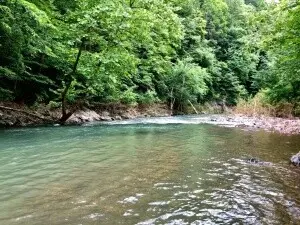 Without much to show, we mutually agreed it was time to head south to Williamsville and on to Bullpasture Gorge. The Bullpasture wasn’t high, but the flow was exceptionally strong for early summer and the water had a little tinge to it from the heavy rain two days prior. The still cool water meant the trout were active and we caught some smaller rainbows and one beautiful, fat fourteen inch rainbow. The sun was supposed to shine all day but just before noon some clouds moved in from the west and produced a constant light rain for an hour. Becoming sweaty after wearing our rain jackets for an hour, we packed up and headed to Monterey, towards our next fossil hunting location.
Without much to show, we mutually agreed it was time to head south to Williamsville and on to Bullpasture Gorge. The Bullpasture wasn’t high, but the flow was exceptionally strong for early summer and the water had a little tinge to it from the heavy rain two days prior. The still cool water meant the trout were active and we caught some smaller rainbows and one beautiful, fat fourteen inch rainbow. The sun was supposed to shine all day but just before noon some clouds moved in from the west and produced a constant light rain for an hour. Becoming sweaty after wearing our rain jackets for an hour, we packed up and headed to Monterey, towards our next fossil hunting location.
Just south of Monterey is Big Valley, where Bolar Run carves a meandering shallow indentation. Near there was the spot we were looking for. It took quite a bit of digging online to find a few good fossil hunting sites. Unfortunately, this one had become overgrown with plants and vines, which made the ground surface difficult to access. We did the best we could for a little while and came up with a few brachiopods and spirals.
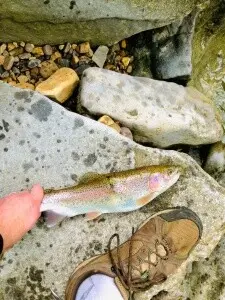 Just off Route 220, Poor Farm Road takes you into Ned Hollow where the Jackson River runs right at the base of two small ridges, leaving room for nothing but the potholed gravel road and the river. The entire time we fished not a single vehicle drove by so the only noises we heard were natural; the branches blowing in the wind, the birds, and the water. The summer sun kept us comfortably warm when waist deep in the cool mountain water. After we fished here for a while we headed a few miles south to Hidden Valley Recreation Area, where we’d fish another stretch of the Jackson and set up camp for the night.
Just off Route 220, Poor Farm Road takes you into Ned Hollow where the Jackson River runs right at the base of two small ridges, leaving room for nothing but the potholed gravel road and the river. The entire time we fished not a single vehicle drove by so the only noises we heard were natural; the branches blowing in the wind, the birds, and the water. The summer sun kept us comfortably warm when waist deep in the cool mountain water. After we fished here for a while we headed a few miles south to Hidden Valley Recreation Area, where we’d fish another stretch of the Jackson and set up camp for the night.
Hidden Valley, as the name suggests, is tucked into a narrow valley cut by the Jackson River with a high ridge line on Back Creek Mountain to the west and slightly lower ridge line on Cobbler Mountain to the east. From the trail parking area, there’s a handful of trails leading downriver, upriver, or into the mountains. We decided to head downriver and take the Hidden Valley West Trail back since it stayed closer to the river, providing easier access. The Jackson River Gorge Trail would actually take us back to Poor Farm Road, but it would be a six mile hike or so. We wade-fished a stretch of river approximately half a mile long mixed with small rapids and slower pools and had fair success, but nothing spectacular.
We walked the trail back to the parking area and it was a little after dinner time when we got everything packed away for the half mile drive to the campground. Our evening of camping was rather anticlimactic. The rigors of the day and time consuming activities left us with little energy or time for a fancy campsite setup. My eight person tent is the bulkiest, heaviest tent I’ve ever owned, but all the pieces stay together so it can be set up and taken down in five minutes. I had some older MRE’s that I wanted to rotate out for newer stuff, so those were our main course. We flipped a coin and I won chicken and dumplings and Nick ended up with chili and macaroni. I’ve eaten almost gourmet type meals on camping trips before, but this was not one of them. To be fair, MER’s aren’t terrible.
We were asleep not long after dark and were up before 6AM. We had another long day. Dunlap Creek in Covington was the first stop. When you’re on the water by 7:30AM and there’s not another soul in sight, you get a feeling it’s going to be a great day. Turns out, that feeling was going to be correct. Dunlap creek is more of a small river in this location and doesn’t produce big fish, but it’s still a great Smallmouth Bass fishery. Cast after cast we were reeling in fish. Once you’re comfortable with yourself as an experienced fisherman, it’s just as fun to watch other people catch fish too so I thoroughly enjoyed seeing Nick having a great time catching a fish or cursing when one jumped and threw the hook.
This was also a run and gun day where we couldn’t spend too much time at a single location since we had several places to go. For me, I sometimes get more out of the trip from experiencing many different places, as opposed to staying in one place for a lengthy period of time. After we waded Dunlap Creek for a little over an hour we drove about fifteen minutes to explore a cave that was about 500 feet in length. I’ve found trilobites and spirals in a cave in West Virginia. We found several large spiders and camel crickets, but no fossils. It was still fun to explore the cave with headlamps and flashlights. When you just sit and listen, the silence in a cave can be deafening. It’s also the darkest place you can ever go; absolutely pitch black with your eyes wide open.
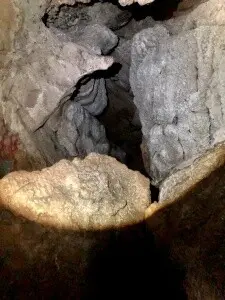 It was a short drive from the cave to Nicelytown, where we got on the Cowpasture River, just above Iron Gate, right before the sun rose above the high cliffs on the southeastern side of the river providing us with the second sunrise of the day. The fishing was slow here and I only caught a single Chub, but it was worth the stop because the riverbed had some of the most beautiful and colorful stones of any stretch of river I’d fished in Virginia. It was a picturesque setting, but we moved on fairly quickly.
It was a short drive from the cave to Nicelytown, where we got on the Cowpasture River, just above Iron Gate, right before the sun rose above the high cliffs on the southeastern side of the river providing us with the second sunrise of the day. The fishing was slow here and I only caught a single Chub, but it was worth the stop because the riverbed had some of the most beautiful and colorful stones of any stretch of river I’d fished in Virginia. It was a picturesque setting, but we moved on fairly quickly.
Nick lived on the edges of the Great Dismal Swamp on the opposite side of Virginia, so he didn’t get to the western portions often. In fact, neither one of us had been to Douthat State Park, which consists of three campgrounds, dozens of cabins, numerous trails, and a lake with a swimming beach. It was in the general direction we were heading for our next fishing stop so we planned to make the little detour to check it out. I’d definitely come back to vacation here. We didn’t fish any, but we did hike along Flat Run Trail which parallels Wilson Creek. It was starting to get a little warm close to lunchtime so we decided to head on up to Goshen Pass to get in the Maury River.
Fishing in Goshen Pass can be tricky, and if you don’t know your limitations, even dangerous. There are class II, III, and IV rapids inside of the gorge. The rough trail we took to access the river was very steep and narrow. At one point, we had to use the root structure of a tree as a ladder where the trail was a six to seven foot vertical drop. It was worth the effort. The stretch we fished had deep water pools right against the southern bank of the gorge with soft, shallow rapids in the middle. The action was nonstop. We caught dozens of Bluegill, Redeye Bass, Smallmouth Bass, and Sunfish . We had planned to fish another section of the Maury in Rockbridge Baths next. I had fished it before, but it wasn’t near as scenic as the gorge, so we decided to stay and fish longer since the fish were so very active.
We had originally planned to fish one other stretch of the Maury between Lexington and Buena Vista, but not being quite as young anymore, both of us were rather worn out. We decided to end the trip on a high note and hiked, or climbed, back out of the gorge to pack up our fishing gear and drive back home. Nick and I considered our trip a complete success, even if we didn’t find as many fossils as we had hoped, because the fishing on the second day far exceeded our expectations. On an even higher note, just a few days later at the lake I live on, I reeled in the biggest Largemouth Bass I’d ever caught, at twenty inches and six pounds. Make sure you get outside or you won’t know what you’re missing.



















